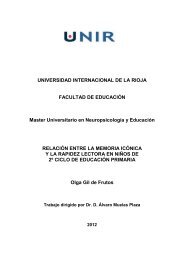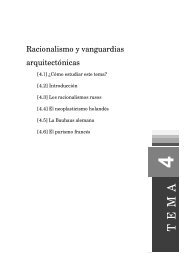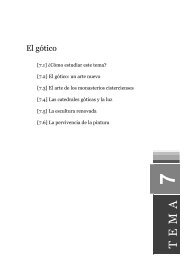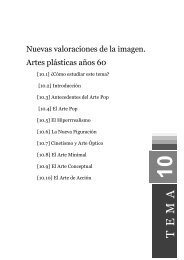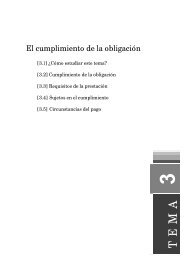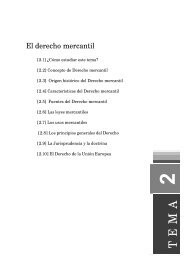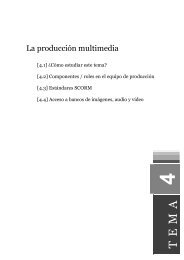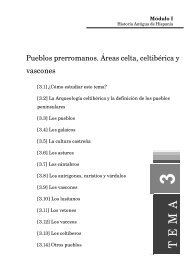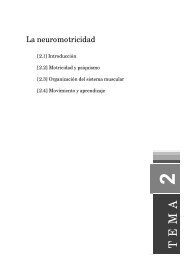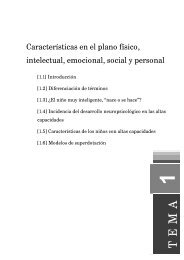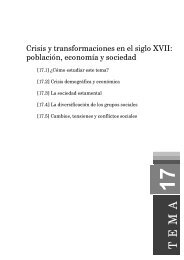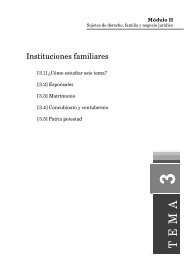You also want an ePaper? Increase the reach of your titles
YUMPU automatically turns print PDFs into web optimized ePapers that Google loves.
Inglés para profesionales de la comunicación IEjemplosI have keysThis key belongs to meThis is my keyThe key is mineYou have keysThis key belongs to youThis is your keyThe key is yoursHe has keysThis key belongs to himThis is his keyThe key is hisShe has keysThis key belongs to herThis is her keyThe key is hersIt has keysThis key belongs to itThis is its keyWe have keysThis key belongs to usThis is our keyThe key is oursThey have keysThis key belongs to themThis is their keyThe key is theirs Como ves, los adjetivos posesivos van acompañando a un nombre siempre; lospronombres posesivos; en cambio, se utilizan solos, es decir, no van precedidosdel artículo the. Para formular la pregunta sobre quién es el propietario de algo, se utiliza whose,que puede ir seguido o no de sustantivo:WhoseWhose key is this?Whose are these?3.3. Present continuous (meaning future) Se utiliza el presente continuo para hablar de algo que se está haciendo o que estáocurriendo ahora, pero también para expresar futuro.PresenteAmI’m working now.FuturoIsAre+ -ingYou’re not working tomorrow. El presente continuo para hablar de futuro se utiliza cuando se quiere expresar quealgo está en los planes de alguien, es decir, que alguna cosa está prevista. Sin embargo, en horarios de trenes o autobuses, programas de espectáculos, etc.se utiliza el presente simple.<strong>UNIT</strong> 3 – Pay attention to...



